Vet identifies and explains 10 signs of aggression in cats
Vet reveals the warning signs of an aggressive cat so you can better understand your feline friend.
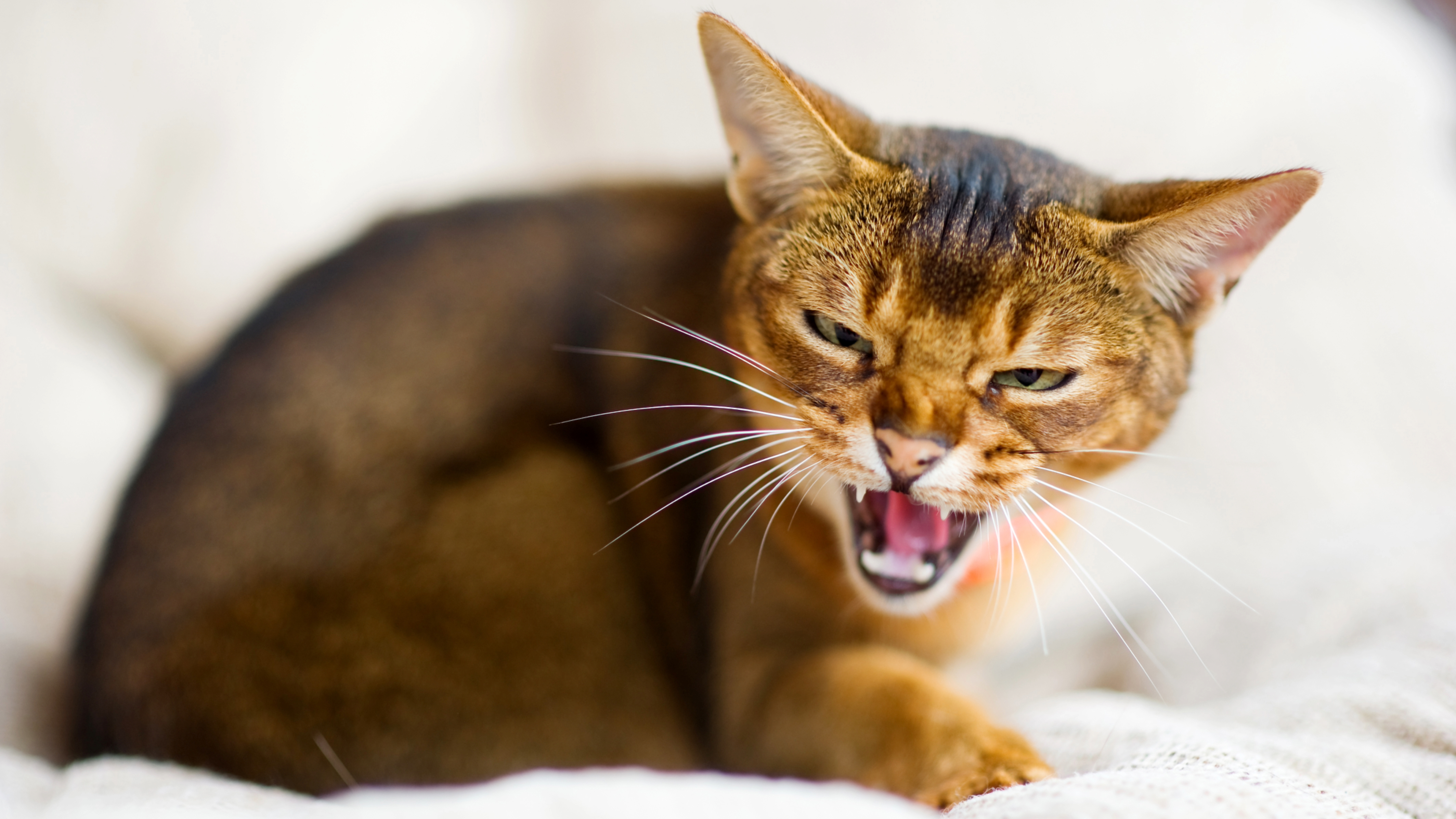
Do you know the signs of an aggressive cat? If not, it's worth being aware of them. While we all hope we won't find ourselves on the other end of our cat's aggression, even typically friendly cats may become aggressive if they feel threatened.
Aggressive behaviors can also manifest as a result of stress and anxiety, and while these behaviors can be scary to be on the other end of, they are very normal and genetically programmed.
Because cats can't simply talk about how they're feeling, they'll often use a range of different body language and vocal cues to communicate how they're feeling. When it comes to how to calm an aggressive cat, the best thing you can do is learn to recognize the signs of aggression and give your kitty space when you see them.
To help you with this, we turned to expert vet Dr Rebecca MacMillan. Below, we've teamed up to bring you the 10 most common signs of an aggressive cat. Read on to find out what they are...
Signs of an aggressive cat
1. Biting

Why does my cat bite me is a common question amongst pet parents and for good reason – nobody wants to have their feline friend's fangs sunk into their arm or leg!
"Biting is a clear sign of aggression that you should take extremely seriously," says Dr MacMillan. "Cat bites can inflict serious damage, driving harmful bacteria under the skin or into a joint."
Your kitty may bite you if they dislike petting, you pet them in the wrong place, they're in pain, or they're feeling fearful. However, not all biting is a sign of aggression, as cat play biting is common (especially amongst younger cats) and a result of their natural urge to chase, capture, and bite prey.
Get the best advice, tips and top tech for your beloved Pets
2. Hissing
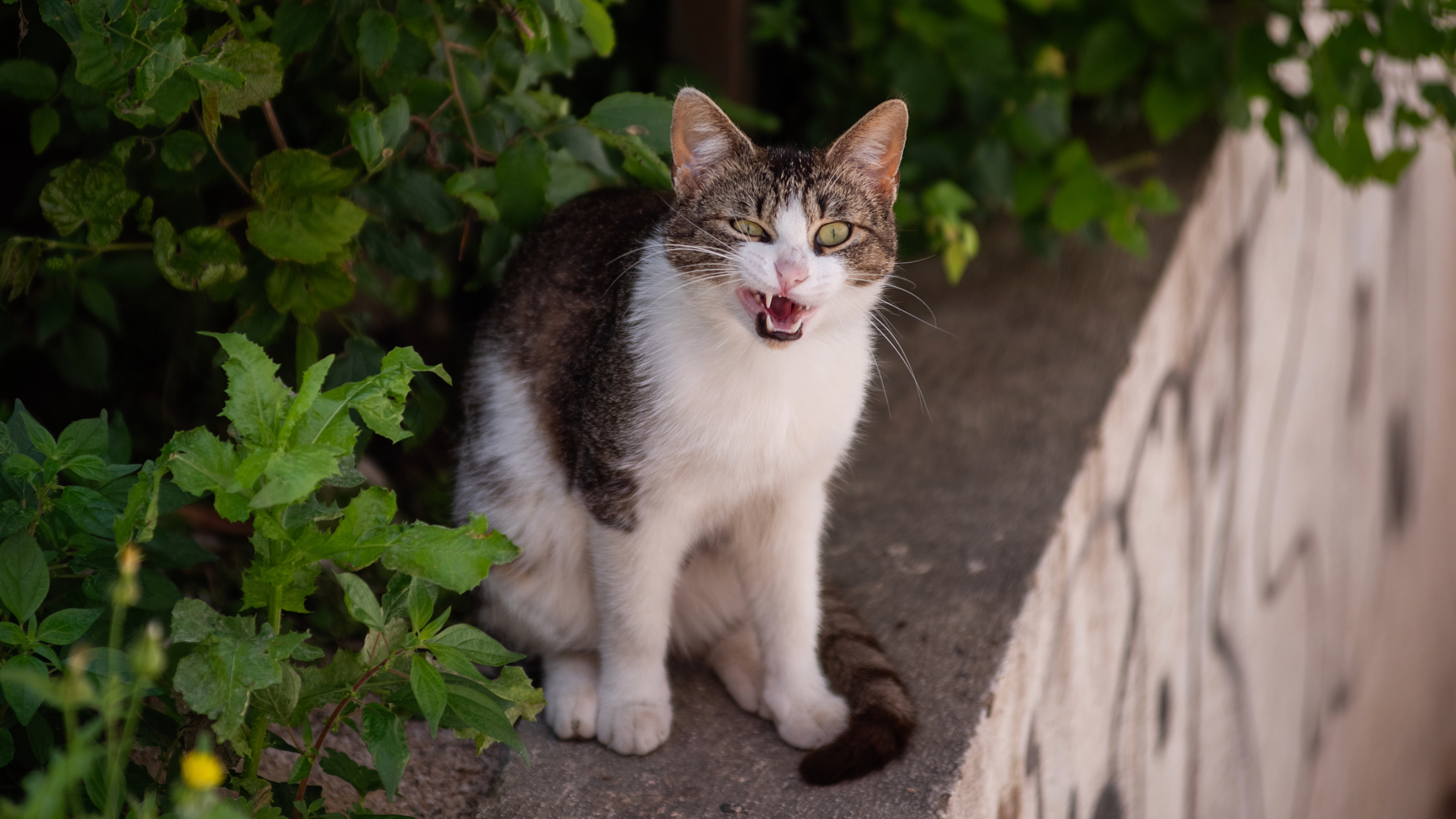
When it comes to things your cat is trying to tell you, a hiss is a clear sign that they're not happy. Cats hiss at each other and people when they're feeling threatened, and it's a normal way for them to express fear.
"An aggressive cat may let out a harsh hissing noise, which could also be accompanied by spitting," explains Dr MacMillan. "A hiss means you should back off and give the cat some space to calm down."
If your cat hisses at you, it's also a good idea to see if you can identify the cause, as this may assist you in making changes to their environment or the way you engage with them.
3. Scratching
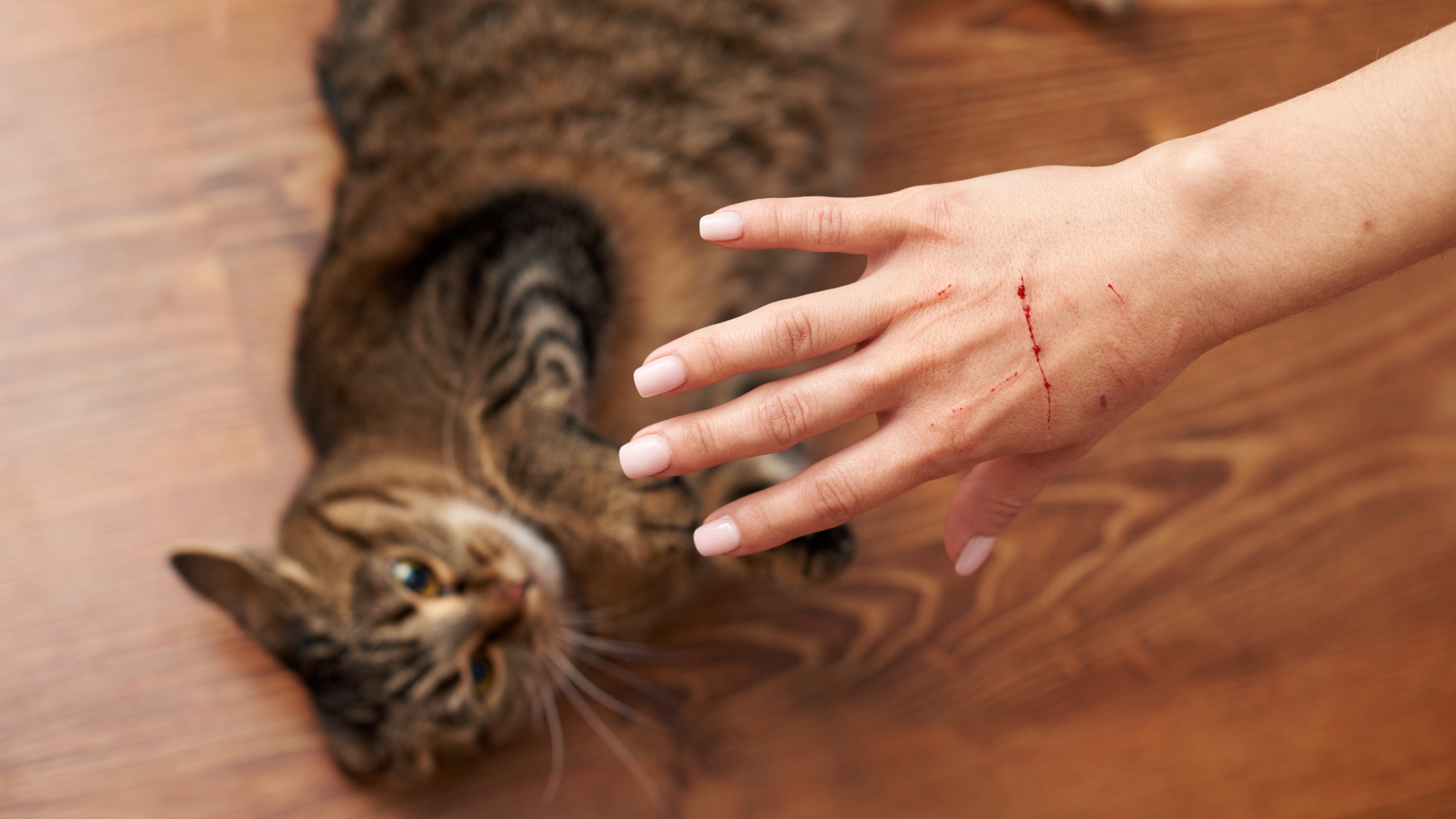
When it comes to the most common cat behavior problems, being scratched is right up there. Cats may resort to physical contact as a way to communicate, especially if they're feeling fearful.
"Striking and inflicting a scratch is a cat’s way of defending themselves," Dr. MacMillan says. "Lashing out sends a clear message that this cat is not to be messed with."
However, just like with biting, not all scratching is a sign of aggression. Play aggression is a problem a lot of pet parents face, particularly with cats under the age of two who are still learning boundaries. If your cat scratches you during play sessions, avoid encouraging rough play and instead only engage when they're calm.
4. Growling
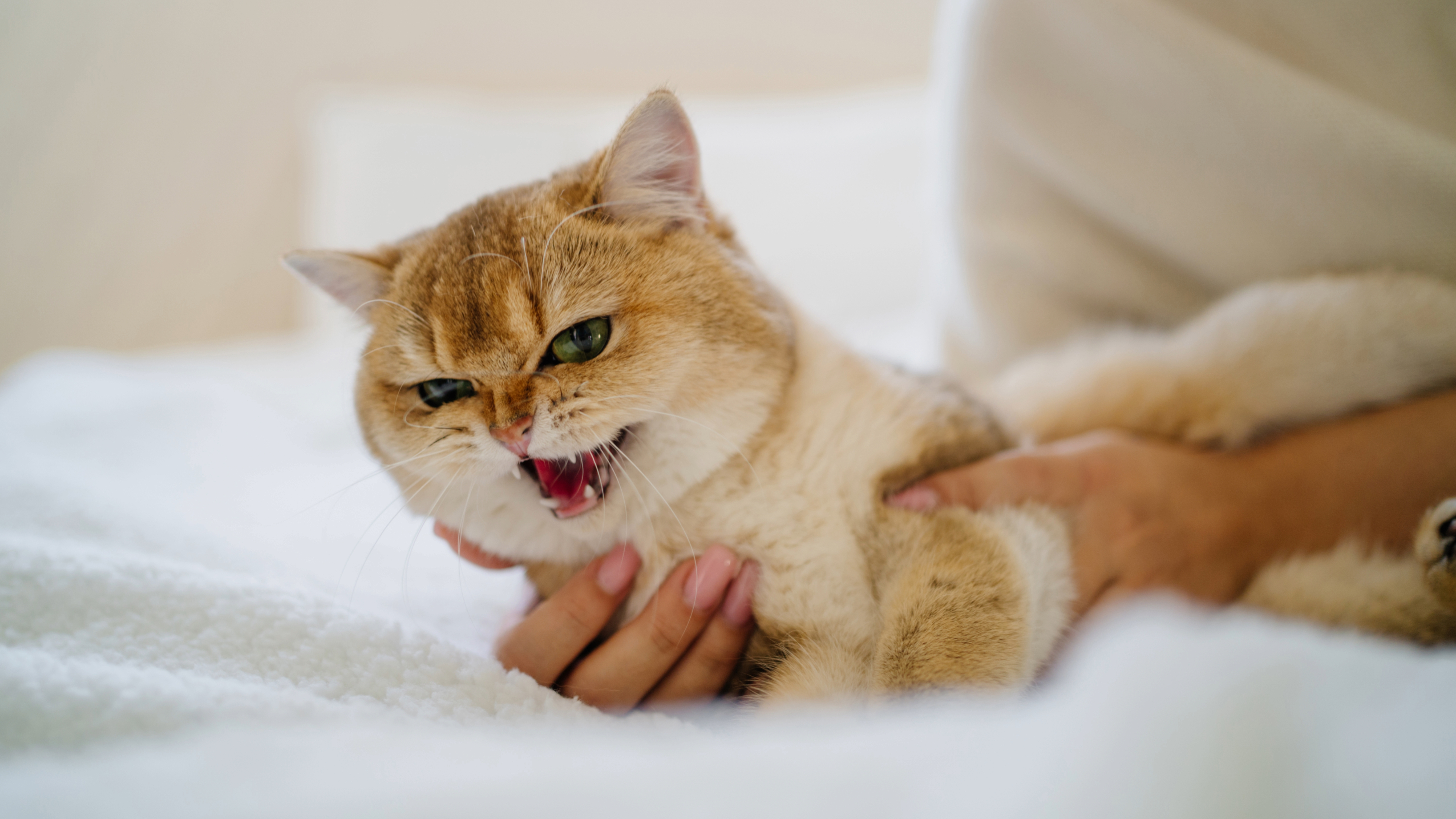
Cat growling is not a very pleasant behavior to be on the other end of, but it's been designed that way for a reason – it's meant to act as a warning to back off.
"Some cats will let out a deep growling noise, sometimes mixed with yowls, cries, or hisses," explains Dr MacMillan. "Growling is a warning sign that things could escalate if you don’t give them some space."
Cats may growl for several reasons, including being in pain, feeling stressed, or they're trying to protect their resources (like food, bedding, toys etc). Unless you're very clear on why your cat is growling, it's worth taking them to a vet for a checkup, as cats are masters at hiding signs of pain.
5. Dilated pupils
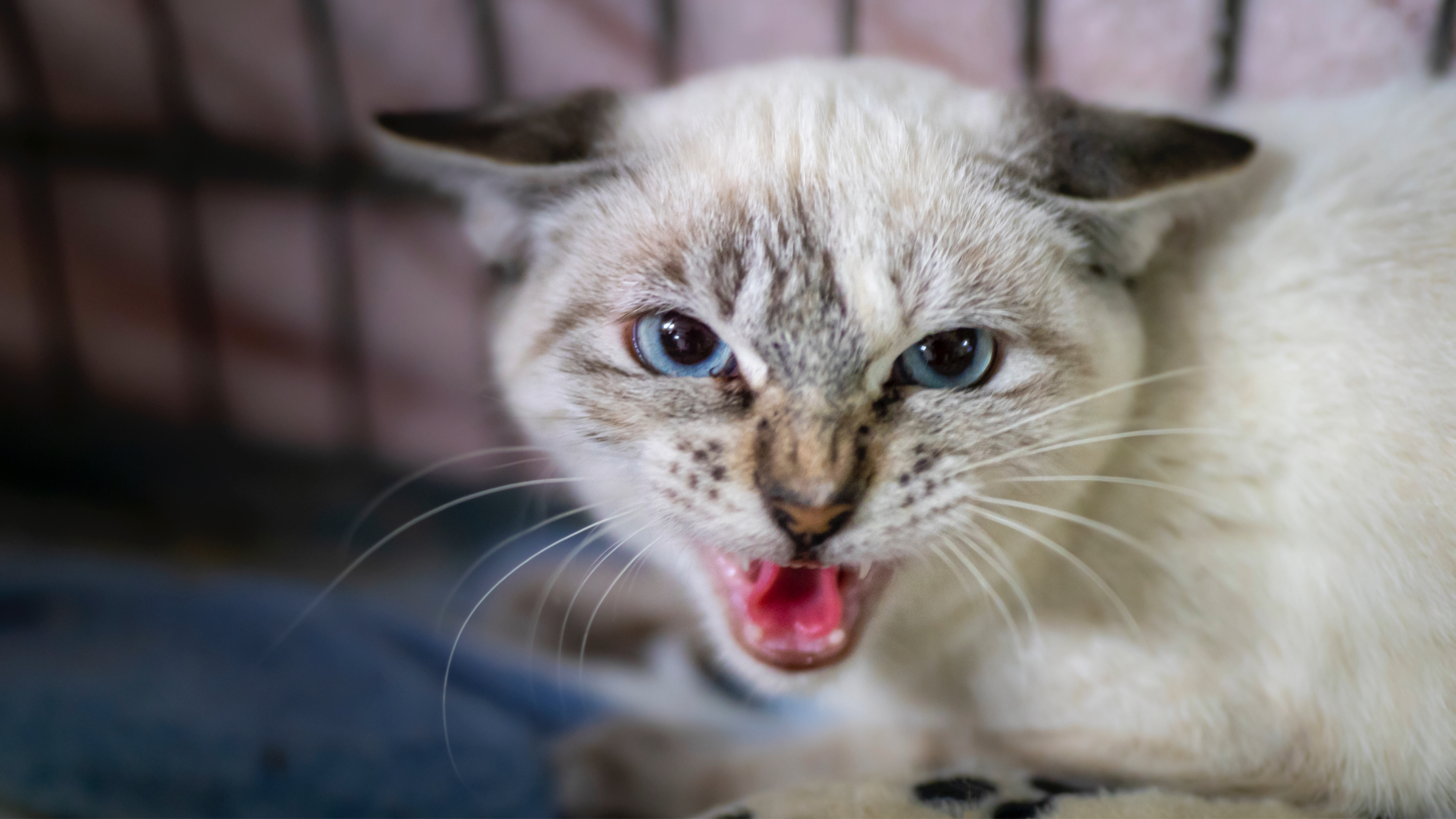
Cats rely heavily on body language to communicate how they're feeling. When their pupils dilate, that's typically because they've become overstimulated due to the rush of adrenaline.
"A scared or aggressive cat will often have very dilated pupils, allowing them to get as much sensory information as possible about their situation," explains Dr MacMillan. "Their eyes will also be very wide open."
While some degree of pupil dilation is normal in low light or when your kitty is stimulated during play, excessively dilated pupils (especially when they're accompanied by other signs) can indicate impending aggression.
6. Flattened ears
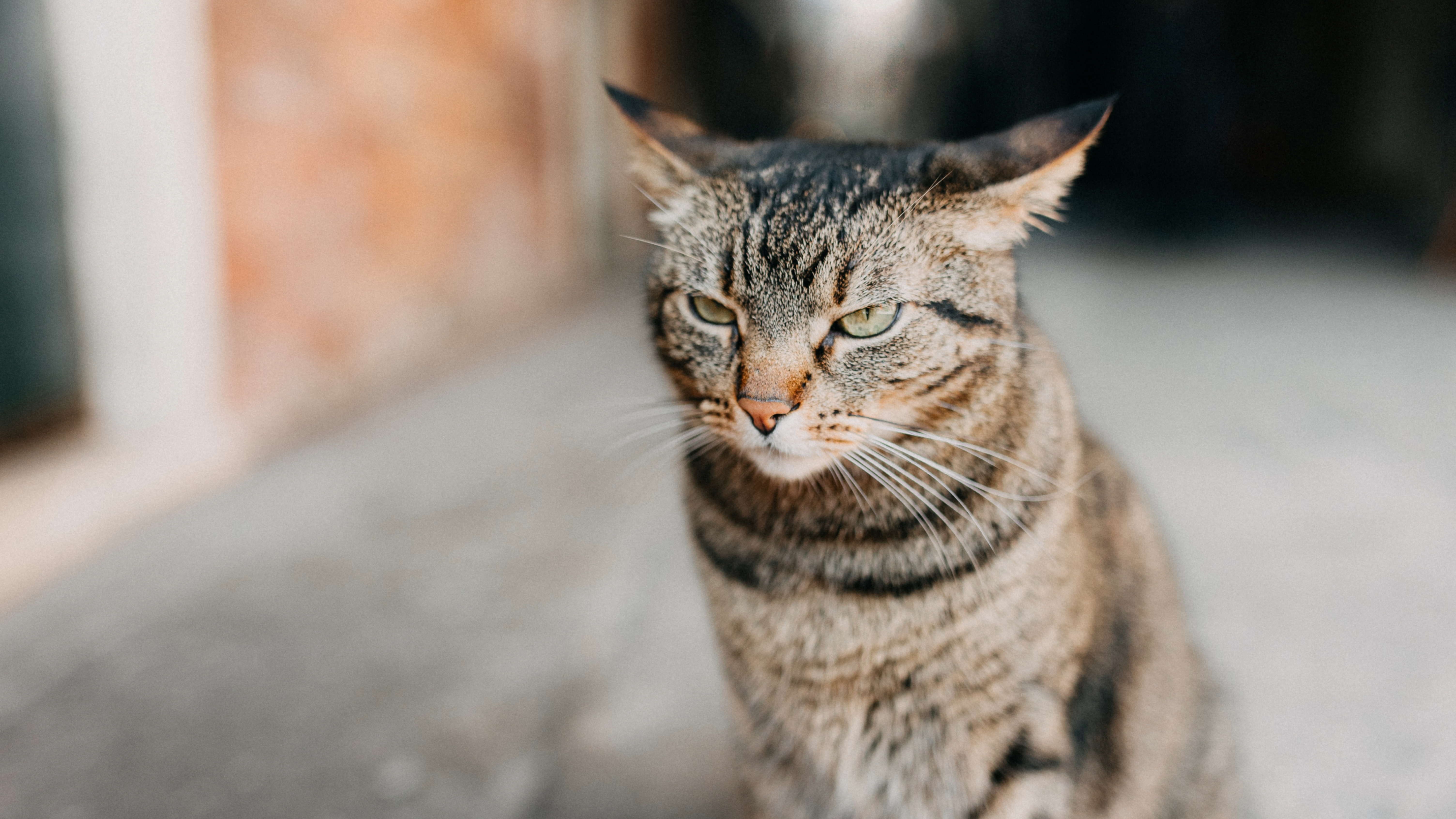
The position of a cat's ears is a crucial clue when it comes to aggression. "A cat that is tense or scared will have flattened ears," says Dr. MacMillan. "There is not one single meaning to this, but this defensive posture helps the cat to protect itself."
It's worth noting that ear positioning is determined by how your cat is feeling. If your kitty's ears are fully flattened against its head, then this is a good indicator they're feeling irritated or fearful, whereas if they're slightly back, then they're likely taking a more defensive posture.
With both of these positions, it's important to recognize that your cat is feeling threatened and may be about to attack, so giving them plenty of space will keep you safe and give them time to decompress.
7. Arched back
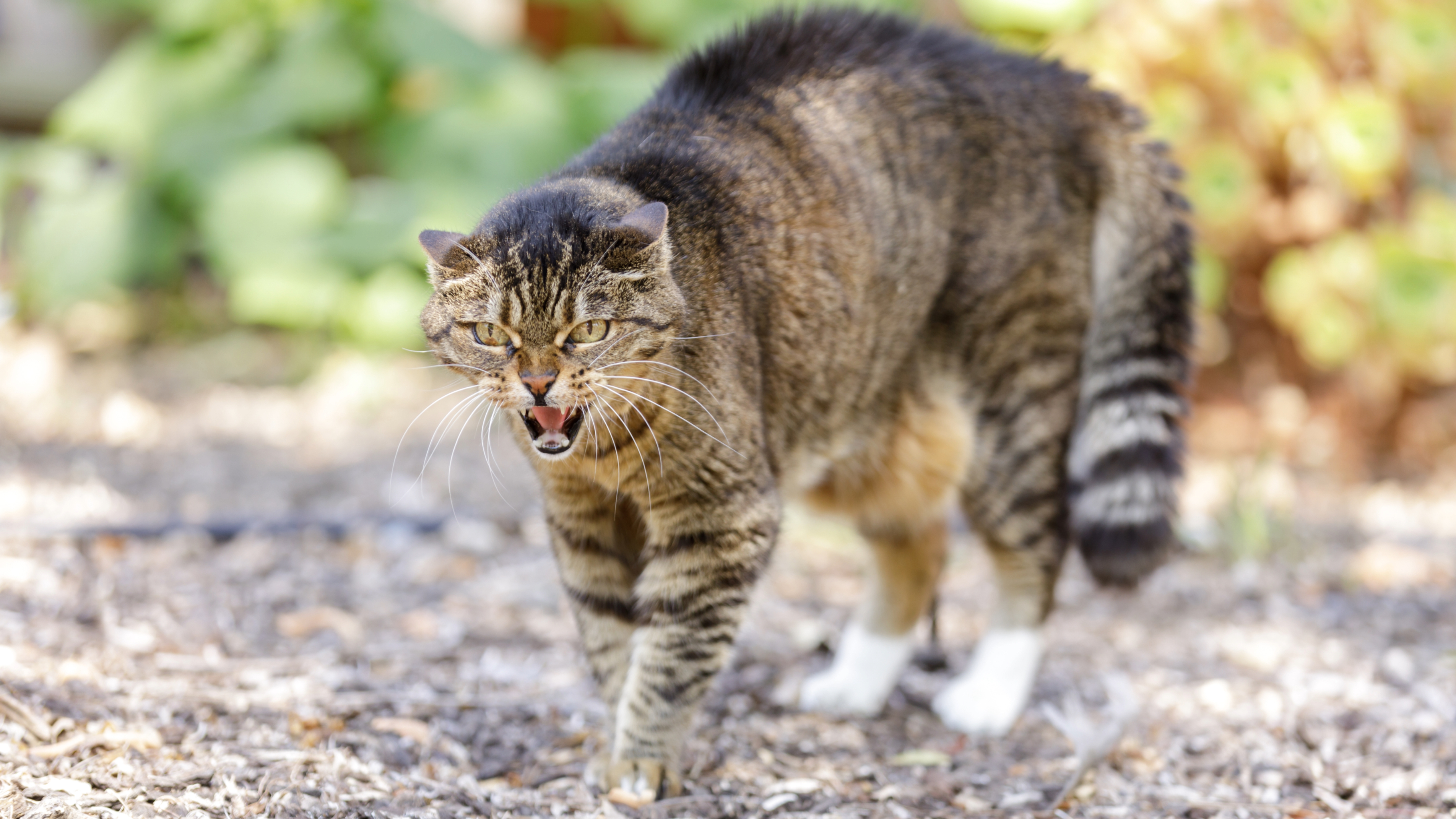
According to Dr MacMillan, cats will try to make themselves look big and threatening when feeling cornered. "Arching their back is a way to make themselves seem more imposing," she explains.
An arched back is only a sign of aggression when it's accompanied by other body language or behavioral cues, such as your cat's fur standing on end, their ears flattened, dilated pupils, or hissing or growling.
Cats will also arch their backs when they're wanting to give themselves a good stretch or when they're playing and having fun. Considering the context will help you establish whether or not their arched back is a sign of aggression.
8. Thrashing tail
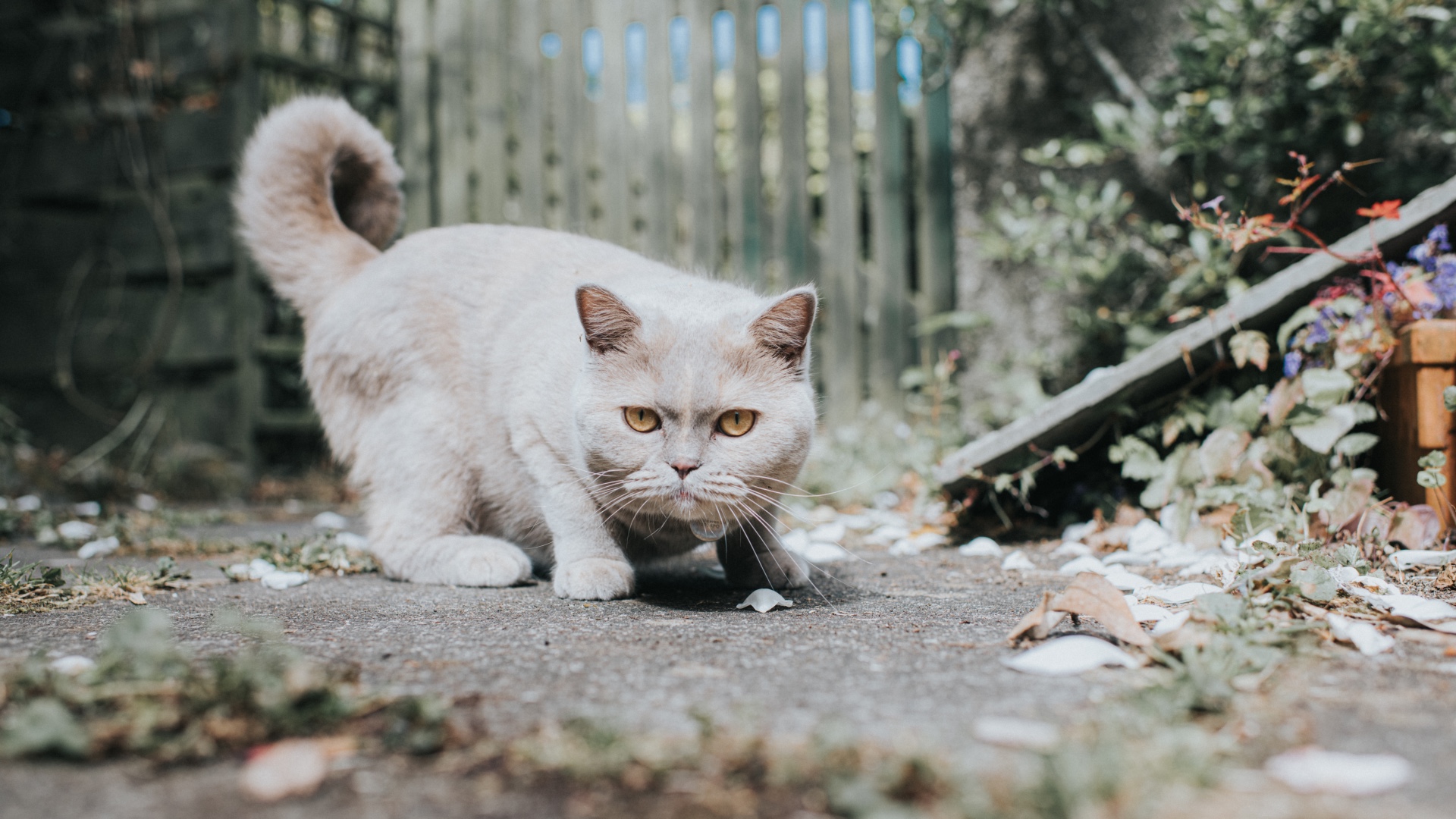
Curious as to what your cat's tail is telling you? The answer lies in the positioning. A cat's tail is a clear indicator of their mood, and as Dr MacMillan points out, a tail that is angrily thrashing about should not be ignored.
"It is a sign that your cat is not feeling happy about something and that their behavior may escalate if their situation doesn’t improve," she says.
In contrast, a relaxed and upright tail typically signals contentment, while a low or tucked tail may indicate that your kitty is feeling fearful.
9. Staring

Cats don't like prolonged eye contact, whether that's with other cats or with humans, so if you've ever watched your kitty when they're calm, you'll notice they look away a lot. They may also give you a cute slow blink to show how much they love you.
According to Dr MacMillan, a direct stare without blinking is something you want to pay attention to. "A cat that is giving a hard stare may go on to attack," she explains. "A content and relaxed cat may look at you with a soft gaze and will often have slightly closed, slow blinking eyes."
10. Fur standing on end
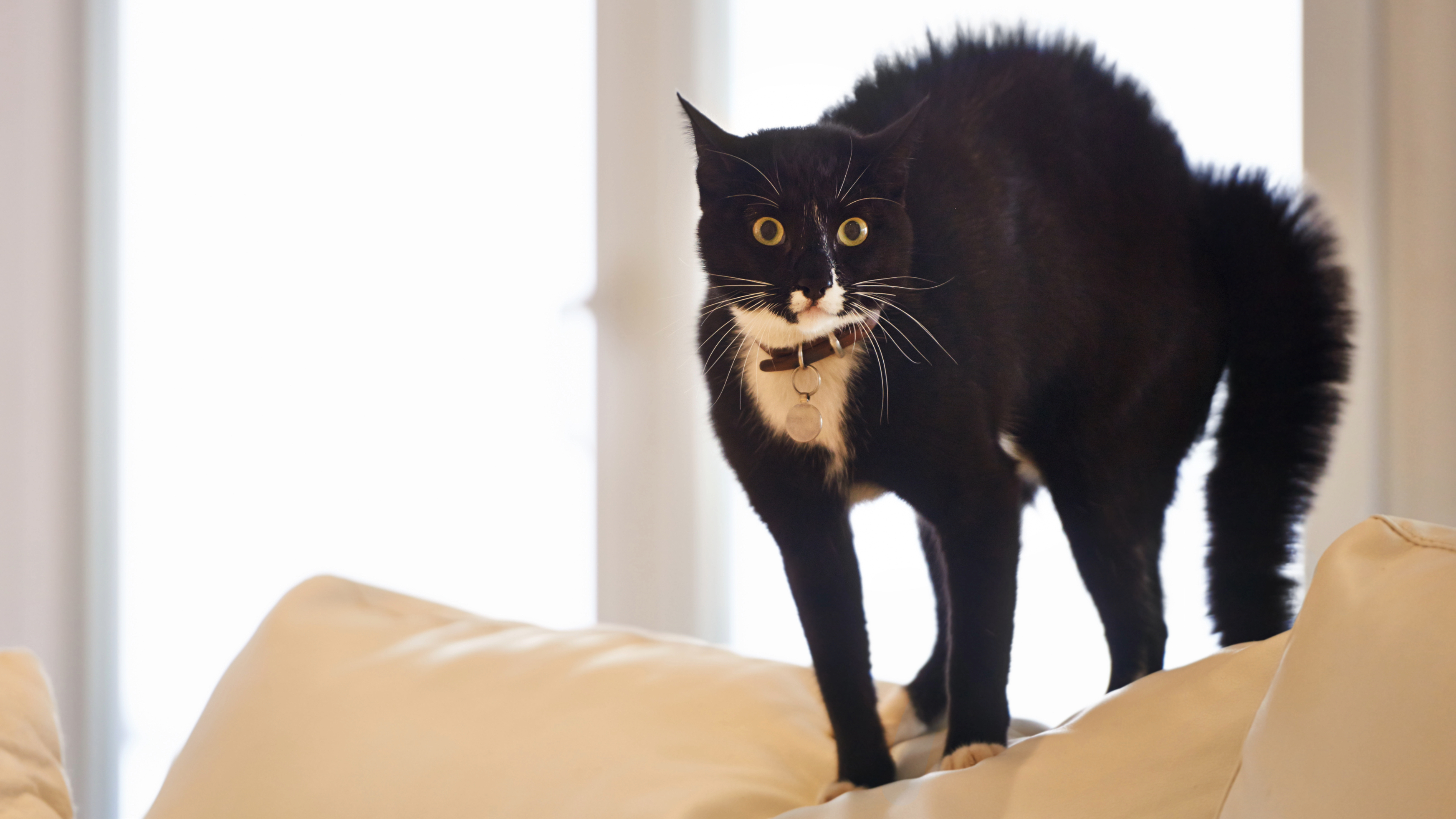
Have you ever seen your cat's fur standing on end? You may have noticed that if they run into another cat in your neighborhood, they turn into a giant fluff ball. Dr MacMillan says that this is "a natural response to a threatening situation."
"The technical term for this is piloerection, and it is another method that cats use to make themselves seem more imposing," she adds. Fur will typically stand on end along the back and the tail.
If your feline friend suddenly develops this defensive posture and it's accompanied by other signs of aggression, like hissing, growling, or flattened ears, you'll want to step away and give them space to calm down.
Read next: Signs a cat is stressed
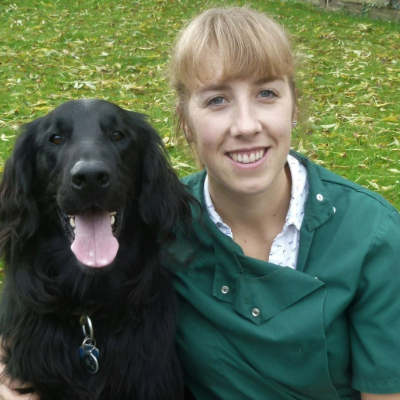
Rebecca is a veterinary surgeon who graduated in 2009 from the Royal Veterinary College in London. She has a wealth of experience in first opinion small animal practice, having done a mixture of day-to-day routine work, on-call emergency duties and managerial roles over the years. Rebecca enjoys medicine in particular and she is proud to have recently achieved a BSAVA postgraduate certificate in small animal medicine (with commendation).
Edited by Georgia Guerin and Alexis De Leaver.
Last updated in June 2025.

Kathryn is a freelance writer who has been a member of the PetsRadar family since it launched in 2020. Highly experienced in her field, she's driven by a desire to provide pet parents with accurate, timely, and informative content that enables them to provide their fur friends with everything they need to thrive.
Kathryn works closely with vets and trainers to ensure all articles offer the most up-to-date information across a range of pet-related fields, from insights into health and behavior issues to tips on products and training.
When she’s not busy crafting the perfect sentence for her features, buying guides and news pieces, she can be found hanging out with her family (which includes one super sassy cat and a kitten), drinking copious amounts of Jasmine tea and reading all the books.
She has written for a range of publications, including Fit&Well, Top Ten Reviews, LiveScience, Goodto, and Product Hunt.
